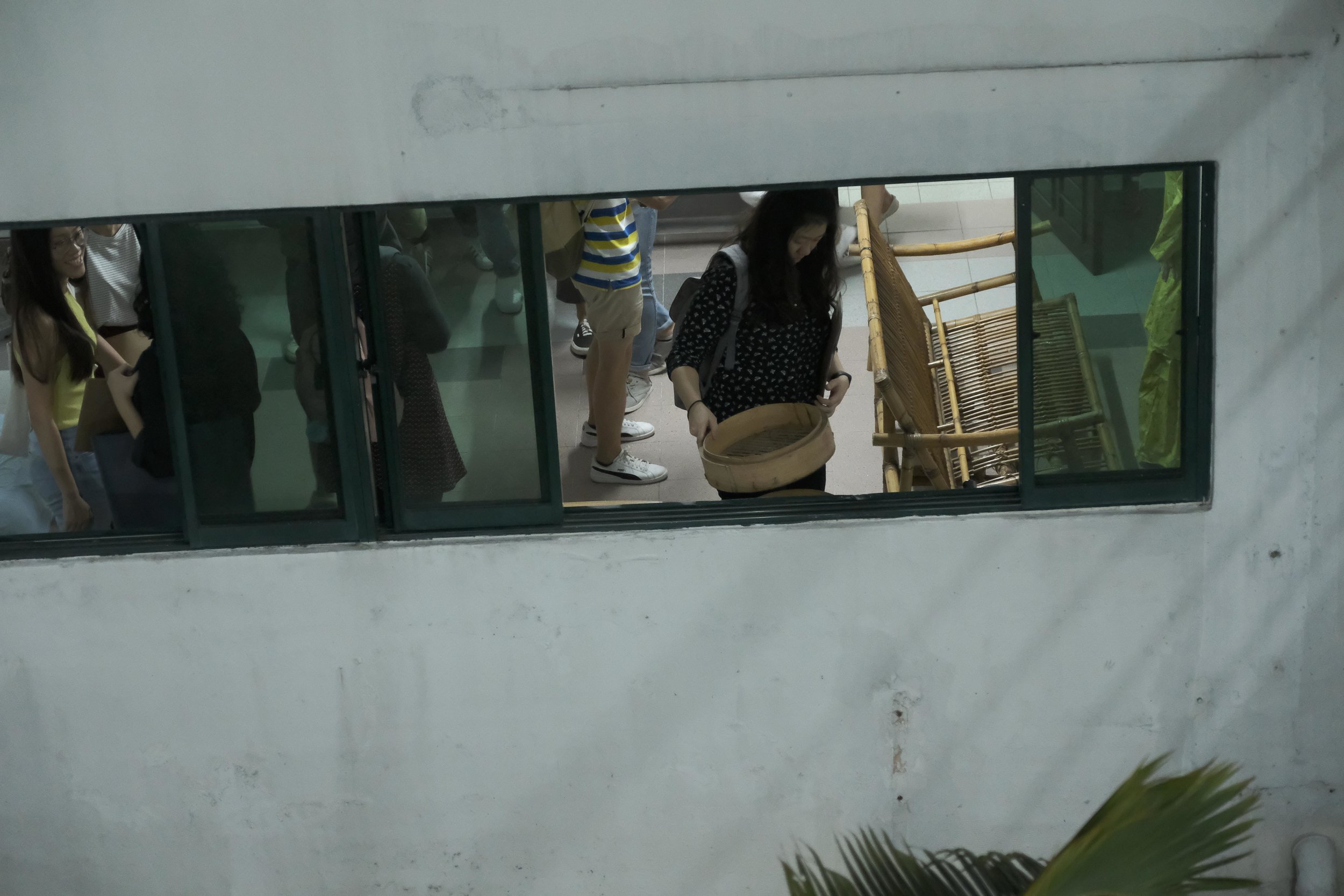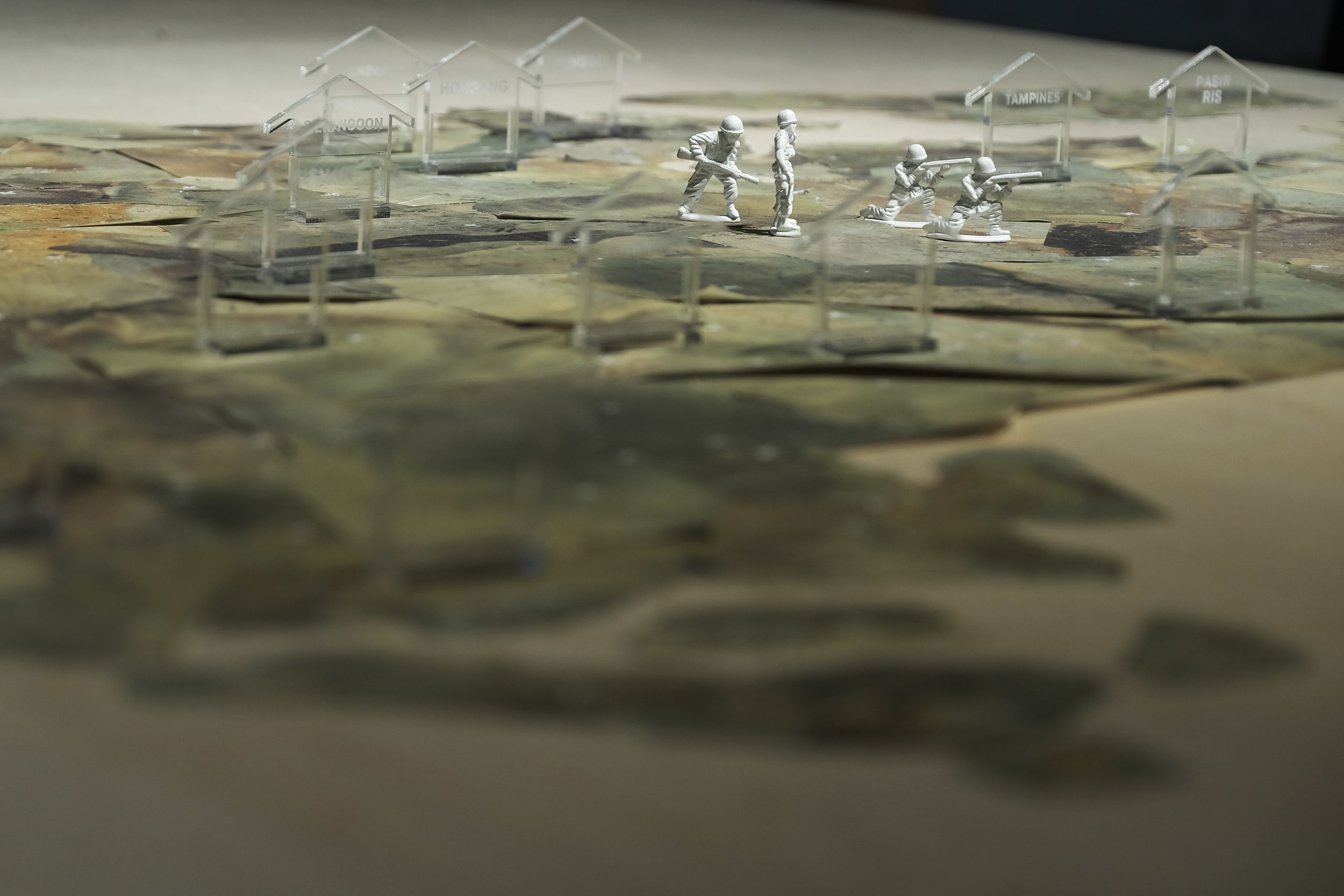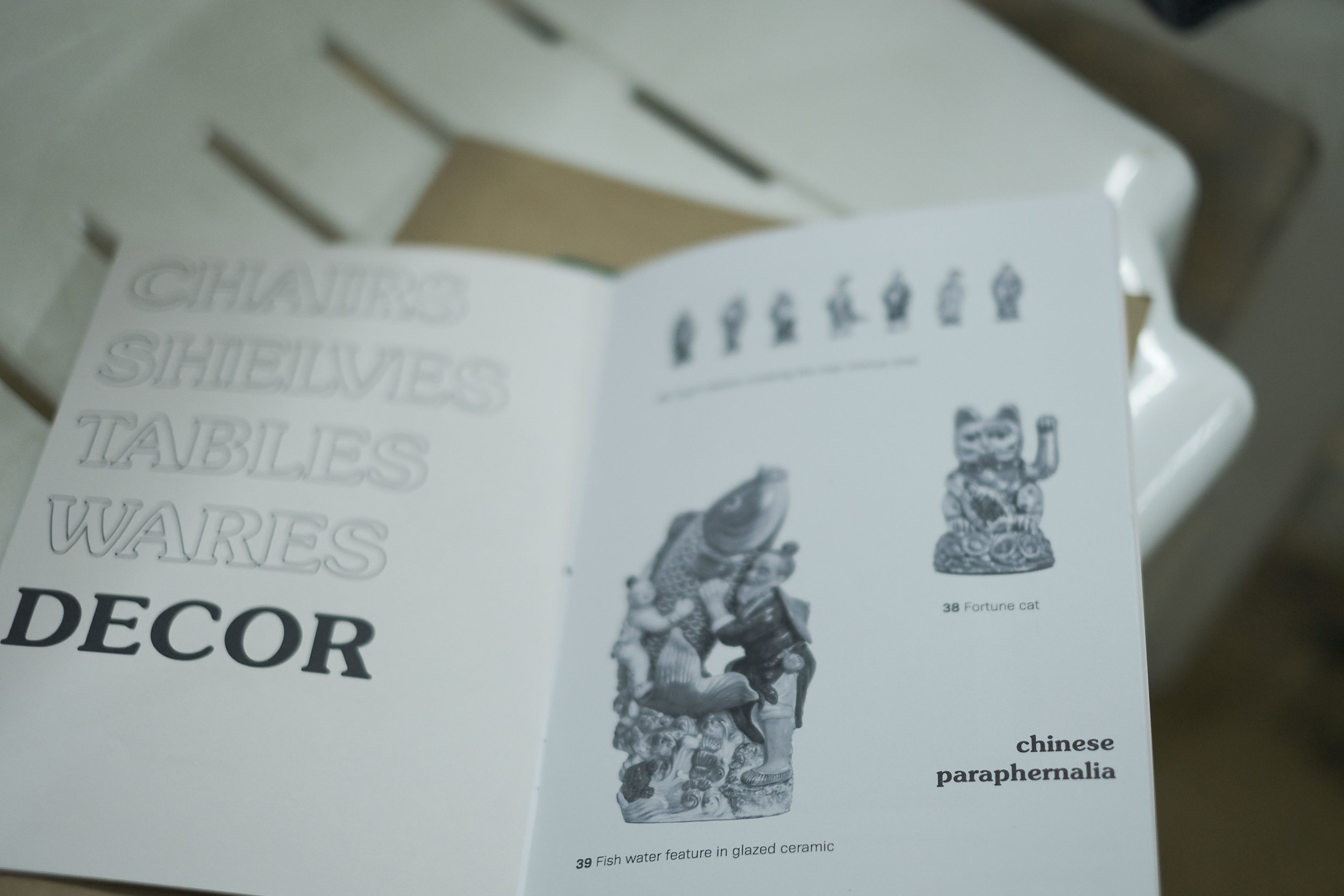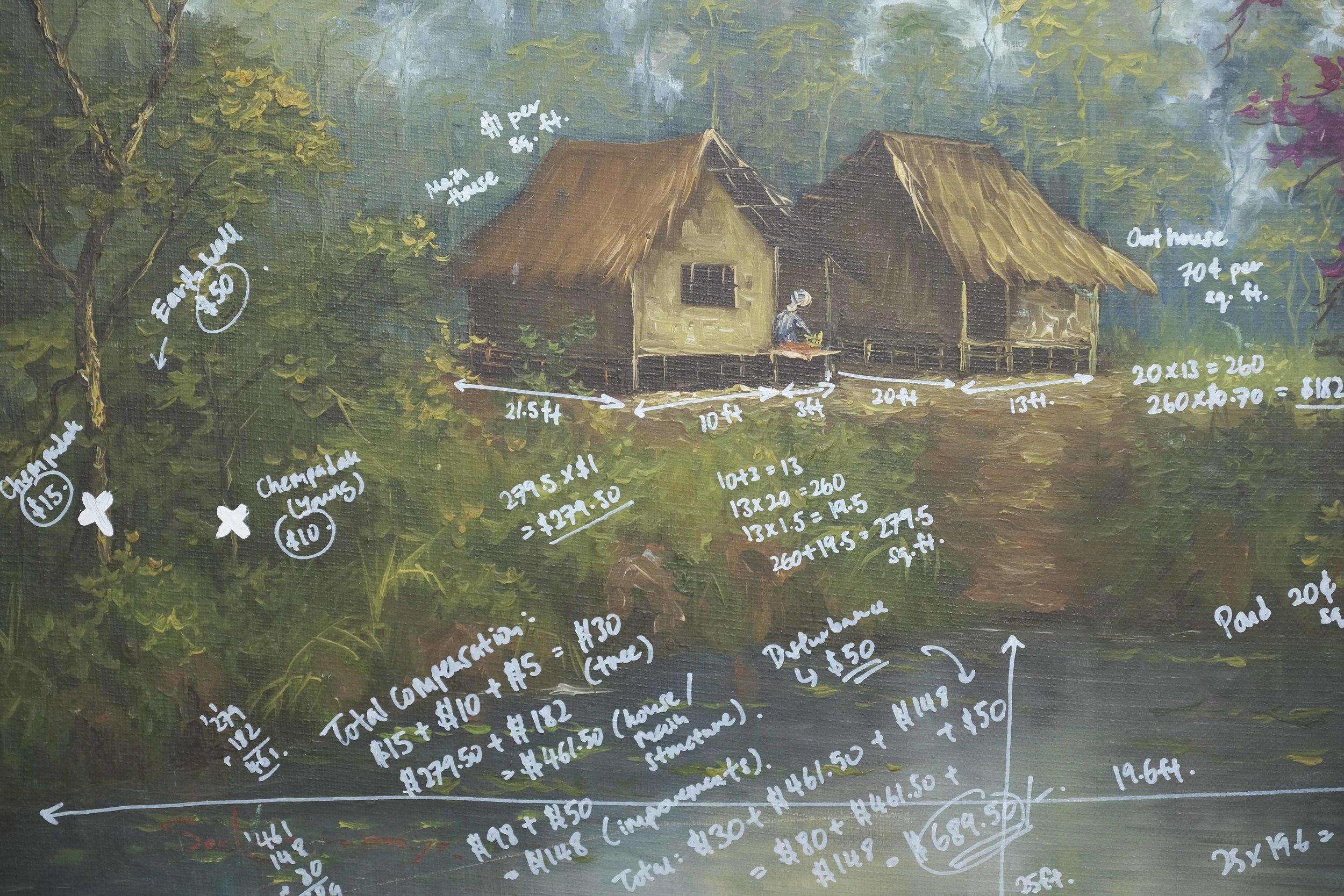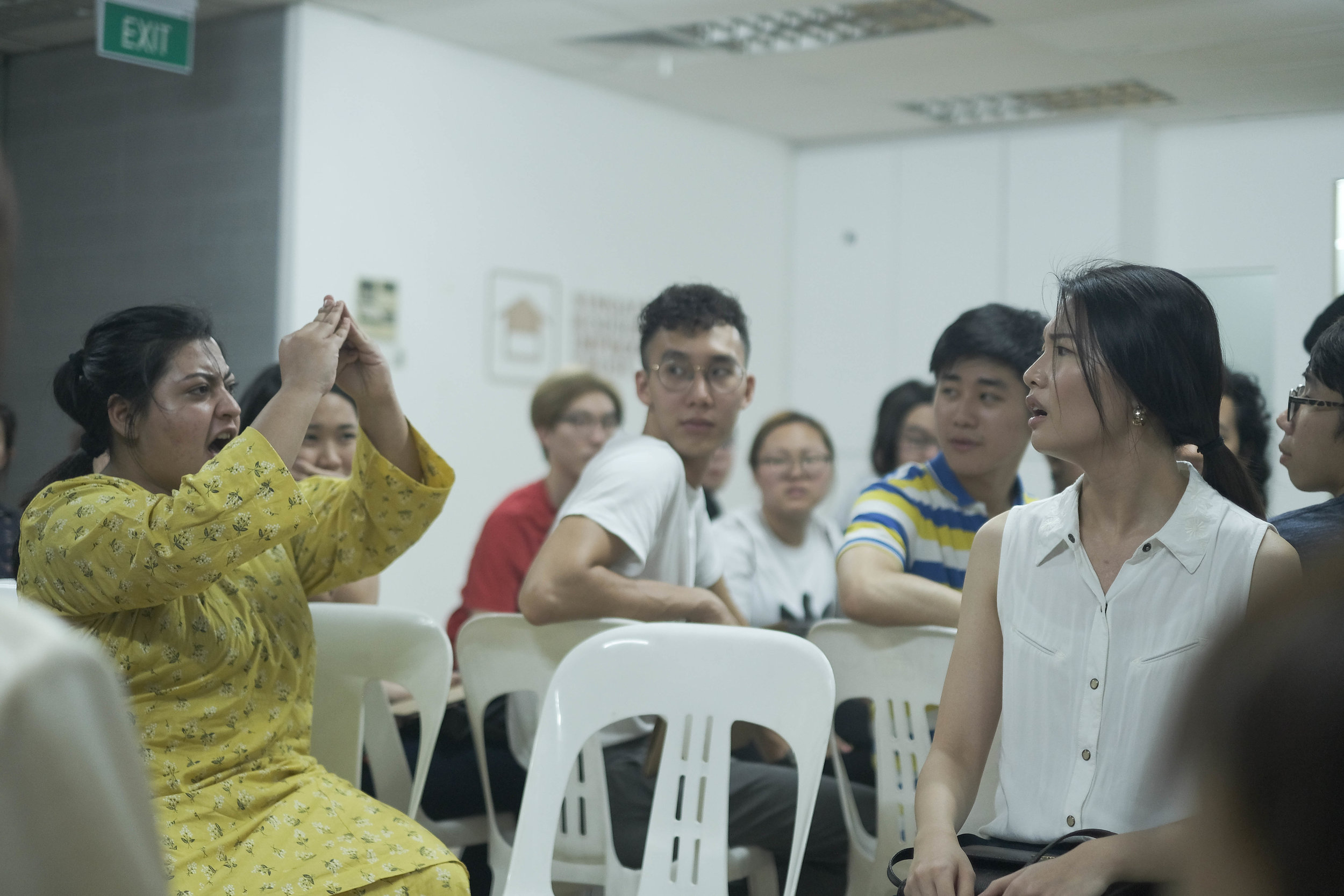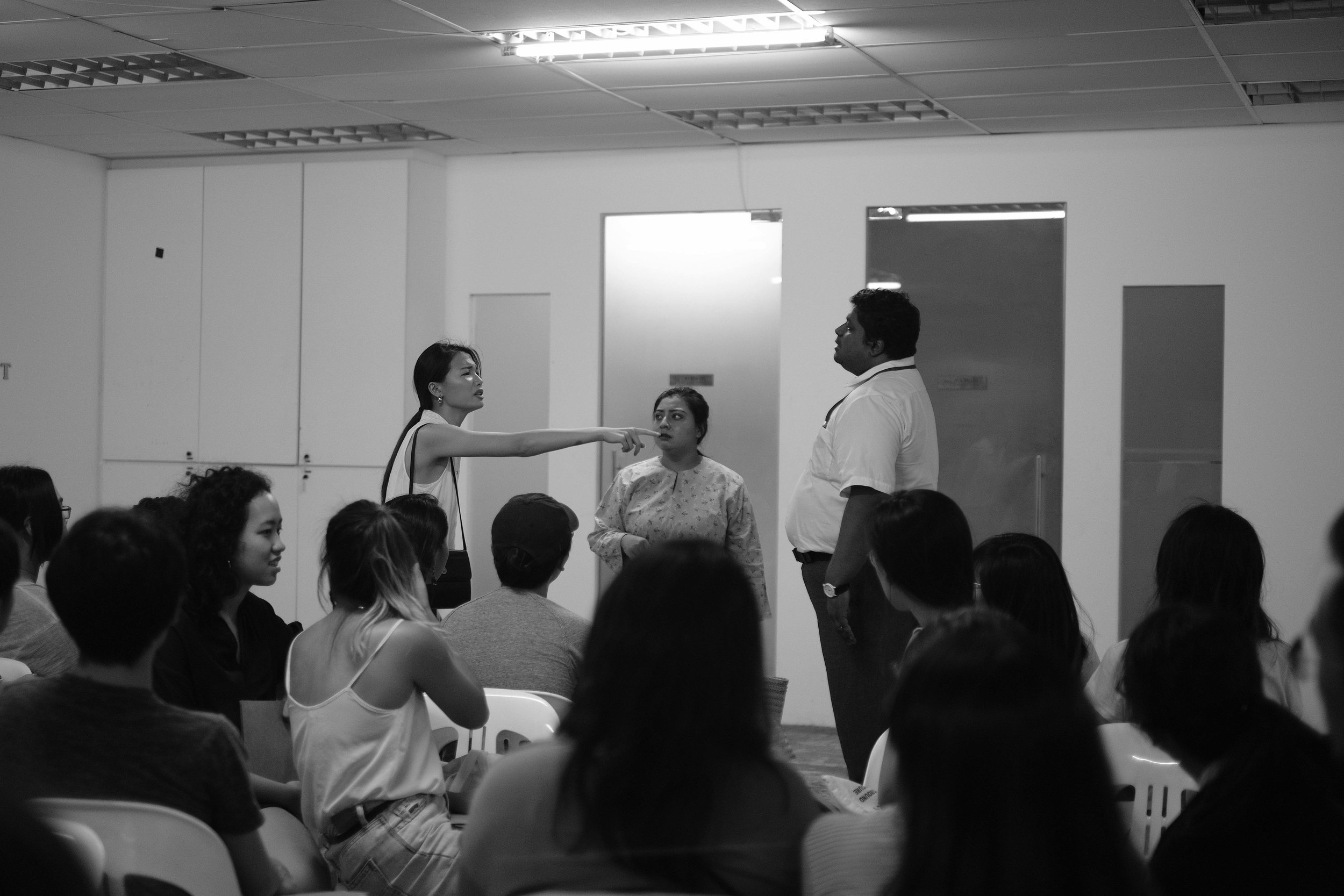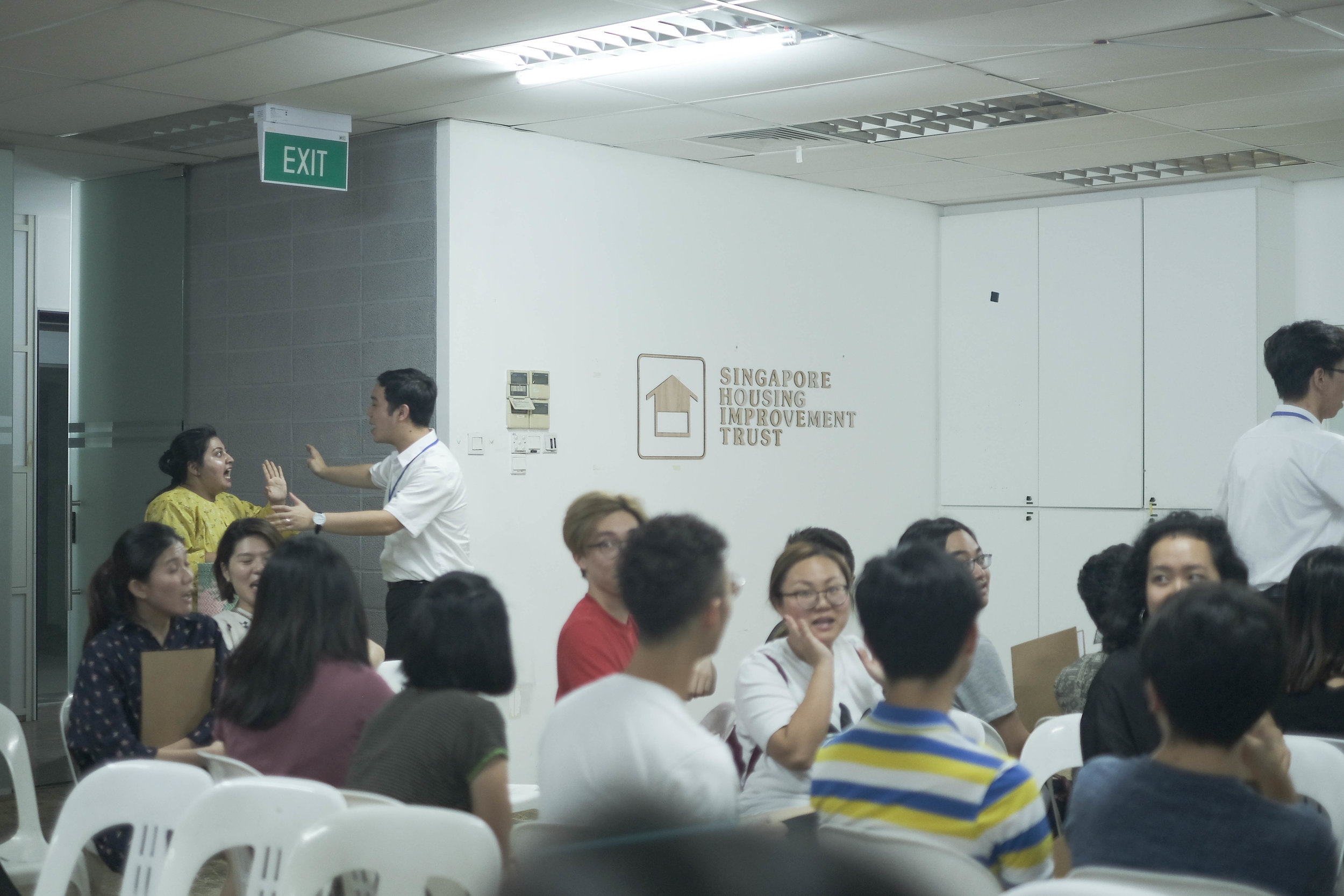Leaving The Kampung: A review of First Storeys
by Marc Nair, 17 March 2019
First Storeys is part of The Future of Our Pasts, a festival that interrogates history beyond the purview of academia. Various artistic mediums are employed to explore and reimagine lesser-explored historical narratives. Ranging from musicals to exhibitions and installations, it is both a recognition and an interrogation of Singapore’s history as we know it.
First Storeys is an interactive installation and performance premised upon the relocation of citizens from kampungs and squatter settlements into new housing estates. This forced relocation displaced scores of people, often leaving them bereft of community, identity and a sense of home.
Set in the grounds of the former Bukit Ho Swee Community Centre, participants are grouped into a tour-sized bunch and are asked to register at the front office of the Singapore Housing Improvement Trust (SHIT). We are given a piece of paper that details our current living quarters, e.g. farm with fruit trees and the number of people living in our compound. All of us are here to be resettled into brand new HDB flats, but first, we have to be briefed.
"In history," Sean Cham writes, "we often only remember the before, and the after. Little is known about the in-between – Resettlement, which spans a good 40 years of history. When crafting the state narrative, we also often forget about the histories of certain groups of people”. Cham is the creator of First Storeys.
Our tour guide is Mr Pillai, a SHIT officer who is here to give us a tour, a kind of on-boarding into our new lives. There’s no power in the community centre, so the team jerry-rigged lights to transform some of the rooms into exhibition spaces. We are led from room to room to consider various aspects of HDB blocks; from mundane pipes and fittings to the location of housing estates vis-a-vis army installations and camps.
The macro and micro aspects of urban planning and shaping a nation are brought into sharp relief in a room where the breakdown of a kampung house is provided in cold cash, right down to the mangosteen trees. Sadly, the compensation does not even cover the cost of the HDB flats that people are moved into. Not only did Singaporeans lose a fundamental way of life, they, through no fault of their own, ‘restarted’ with a debt for a house that wasn’t really theirs. Public housing in Singapore is a bit of a misnomer, as it bucks the global idea of public housing being something that’s affordable and for a particular class of people.
After touring various rooms, we step outside to a view of some of the first flats ever built in Singapore. The Bukit Ho Swee blocks were erected post-haste after a massive fire swept the area in 1961. Rather than allow squatter settlements to pop back up, the government decided to clear the land and build blocks for the homeless residents. This was a brilliant decision, but it also set the wheels in motion for a far larger plan to relocate residents all across the island.
Our last stop was the SHIT office, where we waited to see one of the housing relocation officers. There were a couple of female actors planted in the audience, and they made a huge song-and-dance about being relocated. As it turned out, both were single and therefore were made to share a flat against their will. While this micro-story was compelling, the limited arc of their narratives meant that their lines ended up being very repetitive and audience engagement was limited to passive agreement or even heckling, because the queue to see the SHIT officers was not called in sequence.
Eavesdropping on a fellow applicant’s conversation with a SHIT officer.
Mr Pillai, my SHIT relocation officer, explaining my situation to me.
The ‘lucky’ few who managed to see the officer had their compensation calculated for them and they were told to vacate their houses within a month.
The situation gradually devolved into something chaotic, but it left the audience wanting something more. I think this was more about the lack of real ‘interaction’ and how the space was set up – only a few people could interact with the actors at any one time, and the audience wasn’t sure if they should actually engage. When they did, the responses weren’t forthcoming, so nothing truly iterative or revelatory was established.
The final scene, before we were ushered back to the foyer, was of the two women in their house, years later. They were issued a letter that informed them that they would have to move again as the HDB was doing an en-bloc exercise. This last portion was moving, but overall, First Storeys was nowhere as powerful as it could have been. Part of that was due to the limited narrative arc offered by the actors, which was surprising, as the starting point is the rather bold acronym: SHIT. I fully expected something a lot more hard-hitting about the system and its inherent inequalities, or even a straight-up parody, but much of the technical and factual details about resettlement seemed to be taken straight from the archives and deployed without a deeper sense of irony.
Perhaps all this is meant to be latent and the price of progress is something that must remain unvoiced. After all, discontent is hard to express when you have a brand-new apartment with en-suite bathrooms, a rubbish chute and gasp! Elevators!
Sean Cham, the creator of First Storeys, created a handbook in which he features prominently. The handbook gaily prepares residents for the process of resettlement.





